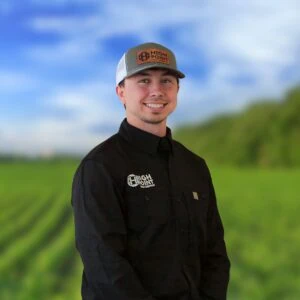Prescribed Fire
 Ethan Stubbs
Ethan Stubbs
Iowa Land Specialist
Each spring, as new life pushes to the surface, it often struggles beneath a blanket of last year’s thatch and dead matter. To clear the way for fresh growth and promote healthier ecosystems, many conservationists and outdoorsmen turn to one of the oldest land management tools known to man: fire.
When done correctly, prescribed fire can be one of the most effective and sustainable tools in land stewardship. But when done carelessly, it can quickly become destructive—threatening wildlife, land, property, or yourself.
The most critical factor in spring burning is safety. The right equipment and preparation can mean the difference between success and a 911 call. Some of the groundwork for a safe burn can begin months ahead of time. In large CRP fields, fire breaks—like clover or alfalfa strips—can help. If you missed the planting window, using a tractor and disk to turn the soil can also create a solid barrier to help contain the fire.
Weather is another major variable—and one you can’t control. Even under what seem like perfect conditions, a sudden gust of wind can turn a calm grass fire into a dangerous forest blaze. That’s why it’s crucial to plan well in advance. Watch the forecast—especially wind speed, direction, humidity, and dew point. A lower dew point means drier conditions, which makes fire more aggressive. Ideally, you’ll want humidity in the 30–35% range to allow for a slower, more controlled burn.
Once the plan is in place and conditions are right, gather a team of trusted people who know what they’re doing. Burn slowly into the wind, and only when wind speeds are minimal and gusts are low. When every piece lines up, you’ll see something special—a slow, steady dusk burn as black gives way to green.
What follows in the weeks to come is even more rewarding. Your efforts will be etched into the landscape as a vibrant new life emerges—healthier, stronger, and more diverse than what stood before. It’s a visual reminder of why we burn, and the beautiful balance between destruction and renewal.
Do you want to learn more?
If you’re considering buying, selling, or managing land, reach out to a local High Point Land Company Agent. For more questions visit our YouTube Knowledge Center.
Growing up in Northeast Iowa, Ethan grew a passion for chasing whitetail deer and wild turkeys at a young age. Deciding to turn this passion into a career, Ethan traveled all over the world capturing hunts with a camera. Fast forward to today, Ethan has continued his passion outdoors and will continue to work in the outdoor space selling farms in Iowa. If you are interested in selling your farmland, call Ethan at (608) 306-1788 or email him at ethan@highpointlandcompany.com
